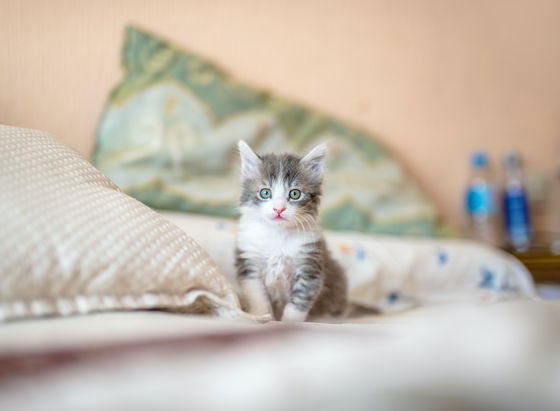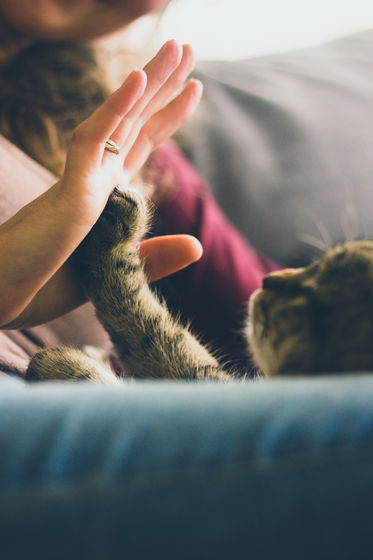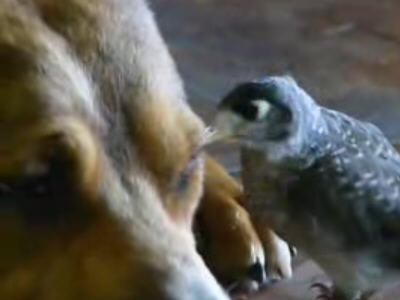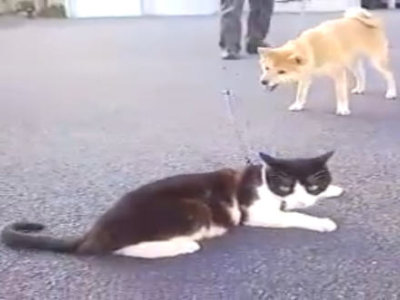Scientists explain ``Why and how to train cats''

The coronavirus pandemic
Why you should train your cat – and how to do it
https://theconversation.com/why-you-should-train-your-cat-and-how-to-do-it-188307
According to Lauren Finca, a visiting researcher in animal behavior and welfare at Nottingham Trent University, the way dogs and cats interact with humans is completely different . While dogs have traditionally worked alongside humans as companions in activities such as herding, hunting, and guarding, cats have never been bred to do so. However, according to past research , cats can be ``trained to perform specific tasks'' just like dogs.

Finca also points out that if you can train your cat correctly, there are many benefits not only to the humans who live with you, but also to the cat itself. For example, if volunteers recruiting foster parents can properly train cats, it will be possible to elicit
However, when training cats, it is important to understand that ``cats are not born with an innate affinity for humans.'' Therefore, Finca says that cats need to be handled gently and warmly by humans from 2 weeks of age so that they can understand that ``humans are friends, not enemies.'' Research has shown that younger cats pay more attention to social connections, so the experience of being treated with care by humans when they were young is extremely important. It is also important to train kittens not to attack human hands or feet by getting them used to playing with toys when they are still kittens.
Punishment actions such as yelling, rough handling, and using water spray can stress the cat and impair the quality of the relationship between cat and owner , so always use positive actions (such as giving treats and praise). You need to discipline them. This is not only the most effective way to train your pet, but it is also known to be good for your pet's health .

Reward-based training can help teach your cat how to enter a carrier on his own, or how to sit quietly and wait during a doctor's appointment. If your cat is a friendly eater, you may be able to teach them how to high-five or sit.
However, cats are more difficult than dogs to pay attention to humans and be motivated to do what humans want. Especially in situations where the cat does not feel comfortable, attempts to train the cat often fail, Finca said, which has also led to
Therefore, when training a cat, it is important to be in a place where the cat feels safe. You need to be able to leave the cat at any time, be prepared to finish the training at any time, and give the cat a break as soon as the training becomes uncomfortable. Signs that your cat is not concentrating on training include: looking away, licking their nose, shaking their head, raising their paws, sudden grooming, and being hunched over or nervous. 'It looks like this,' 'It twitches its tail or slaps it hard,' 'It folds its ears flat.'

In fact, the ``training for putting a cat in a carrier bag'' recommended by Mr. Finca consists of the following 5 steps.
1: Invite him onto the blanket
Teach your cat to settle down on a blanket in a place where it feels safe. To do this, you need to lure the cat onto the blanket using food.
Try to get your cat to stay on the blanket for a long time by using rewards that the cat likes, such as ``giving them treats,'' ``stroking them,'' and ``verbal praise.'' When giving a treat, hold the cat at nose level to encourage it to sit, then gradually lower the height of the treat until it lies down on the blanket.
2: Introducing carry bags
Once you have mastered step 1, place a blanket at the bottom of the carrier bag with the lid removed and acclimate the carrier bag in the same manner as step 1.
3: Slowly and carefully
Once your cat is resting on the blanket inside the carrier, attach the lid and proceed to step 2.
4: Match the cat's pace
Once your cat is happy to go into the carrier and seems calm, you can gradually close the lid. If the cat leaves the carrier, use a reward such as a treat to lure the cat back into the carrier. Encourage your cat to get used to being in the carrier with the lid closed by repeating the process of closing the lid, then opening it again and offering a treat. The key is to close the lid for just a few seconds at first, and slowly get used to it. The goal is to eventually be able to feed treats through the gap in the closed lid.
5: Last spurt
Once your cat can close the door while inside the carrier, train it for longer periods of time. Continue to feed treats through the gap in the lid or carrier bag, gradually increasing the time between feeds. Training should only take a few minutes or less each time, and it can be done as often as once a day. It may take several weeks to complete Step 5, but the key is to be patient and continue training with your cat.

Related Posts:







